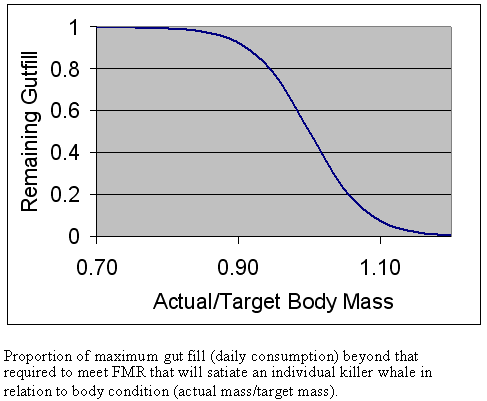Body mass is regulated by reducing the amount of food consumed when an individual
killer whale approaches or exceeds its age and sex-specific target mass. Our
model assumes that a killer whale’s maximum daily consumption is a fixed proportion
of its Target Mass as computed by the von Bertalanffy growth curve (GutMassPercent).
If an animal is underweight, we expect it would attempt to eat an amount near
this maximum, and if very fat would eat only as much as it takes to meet its
daily metabolic requirements, including those for gestation and lactation demands.
For intermediate conditions, we use a logistic function to describe the proportion
of GutMassPercent that an animal would consume beyond its metabolic needs in
relation to its actual mass/target body mass. The mass of food required to meet
this satiation level is based on the energy content of a preferred prey (harbor
seals), rather than the energetic content of the diet on that particular day.


